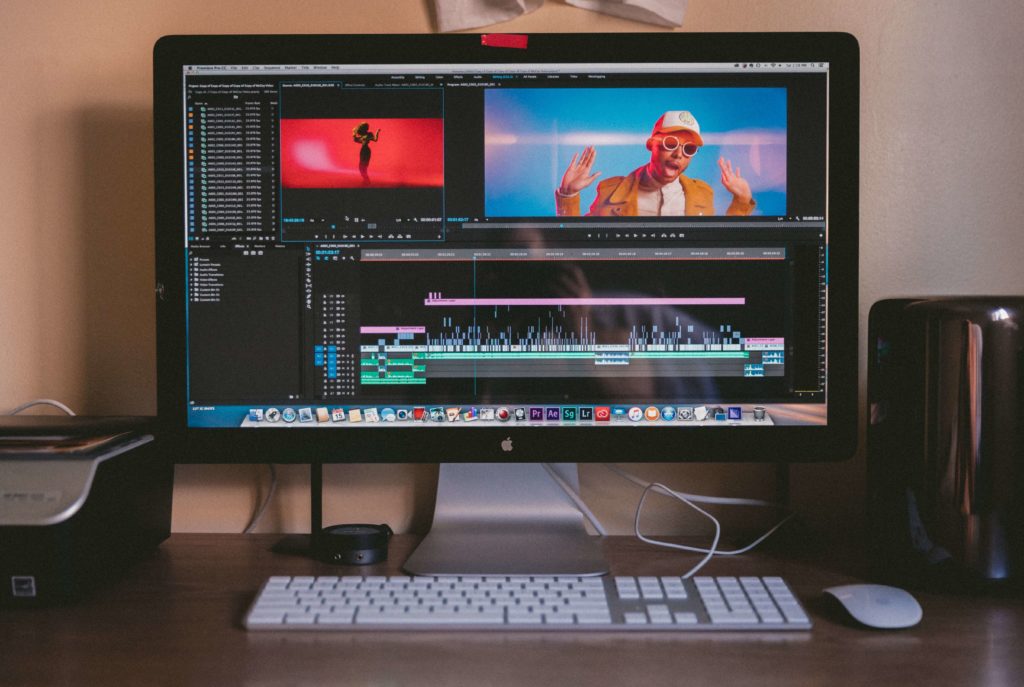With over 175 million active members, Vimeo has become one of the biggest video sharing platforms in the world. Luckily, the platform allows for accessibility solutions like Vimeo closed captioning and Vimeo subtitles to be included with videos being posted to make them inclusive for different audience needs.
Vimeo Captioning Table of Contents:
- Providing equitable access to video online
- What’s the difference between captions and subtitles?
- Does Vimeo have closed captioning?
- How to add captions to Vimeo videos
- Adding closed captioning to Vimeo live
- How do I turn on closed captioning on Vimeo?
- Why add captions to Vimeo content?

Since video can be costly to produce, taking the steps to ensure content being shared on the Vimeo platform is accessible pays off. Captioning your content on the platform is one clear way to drive greater views, as most video is currently consumed on mute. Vimeo captioning also provides equity to individuals with disabilities, such as those who are Deaf or hard of hearing, and can help you better engage foreign audiences as well.
Providing equitable access to video online
Both Vimeo and platforms like YouTube offer closed captioning options for their videos. YouTube offers automatically generated captions (generated in real time by AI) within its platform while Vimeo does not.
However, automatically generated captioning is usually unreliable. Captions can be garbled or generated inaccurately, ultimately resulting in a lower quality piece of content.
For users who wish to add captioning to Vimeo content, it must be done manually or with the help of a third party captioning service to ensure accuracy. Partners like Verbit can assist with this, providing high quality and accurate captions to ensure equitable access.
What’s the difference between captions and subtitles?
Captions are meant for individuals who are unable to hear the audio, such as those who are Deaf or hard of hearing. Subtitles are for people who can hear the audio, but face a language barrier. Captions communicate words, sounds and even names of speakers. Subtitles translate spoken words, but don’t communicate sounds or speaker IDs.
Companies, like Verbit, can partner with businesses creating video to help them add both captioning and translation (via subtitles) in order to help their video content be both equitable and accessible to a wider audience.

Does Vimeo have closed captioning?
For those viewing content on Vimeo, there is an option in the player to toggle on automatic captions. Vimeo content creators are responsible for adding closed captions to their videos. However, there is no service built within the platform that captions videos in real time, unless the video is being live streamed. Content creators often find themselves manually transcribing their video and generating caption files.
However, manually transcribing videos is tedious and time consuming. Transcribing audio can take hours and more often than not is subject to human error. Manual transcription is neither reliable nor realistic when businesses are investing more in video. Plus, when it comes to meeting regulations laid out by the FCC or the Americans with Disabilities Act (ADA) content must be accurate in order to be accessible for individuals with disabilities.
Essential partners like Verbit can help clear this hurdle by working with companies to provide captions that are generated using AI, human captioners or a mix of the two to reach a targeted 99% accuracy. Verbit simplifies the processes of adding Vimeo captions or subtitles on Vimeo by saving you time and frustration in manually creating your own caption file.
How to add captions to Vimeo videos
Not all caption files are uploadable to Vimeo, however Verbit easily integrates with Vimeo. Having Verbit as your Vimeo closed captioning service helps streamline the process of getting both live and recorded videos captioned. For live events, Verbit can assign a captioner to your session on Vimeo.
Here is the best way to add captions to pre-recorded videos you’re posting on the platform:
- Submit your video file to be captioned
Vimeo does not offer its own captioning within the platform unless the video is being live streamed. Don’t try to manually do your Vimeo closed captioning. Recruit a captioning service like Verbit’s to help with your captions and submit the file directly to the platform. Verbit and other professional providers understand how to mark and caption spoken words, audio cues and add speaker identification when necessary for accessibility.
- Receive your .SRT file
The universal file type for captions and subtitles is known as an .SRT file. All Vimeo caption text needs to be saved as this file type in order to be successfully uploaded. If using a third party service like Verbit’s, you’ll have the option to receive or download your caption file in this file type for easy upload.
- Upload the .SRT file with your video
On Vimeo, uploading .SRT files is done through the Subtitles section of the Distribution tab. After it’s uploaded, all you need to do is toggle it on. It is also important to encode your caption files in UTF-8 format so that special characters display properly. UFT-8 format is a system of code that lets you display real characters in your text, such as foreign language accents. Failing to encode caption files in UTF-8 means intelligible coding language may display over your intended captions.
Adding closed captioning to Vimeo live
To improve the accessibility of Vimeo livestreams, webinars and other live video content, it is necessary to add captions by either using Vimeo’s live closed captioning software or a trusted partner like Verbit. Vimeo’s own software works with Google’s API to create video transcripts during a live video. When the live stream is over, the captions are saved with the video.
It’s worth noting that the captions that are generated by Vimeo’s closed captioning live software are automatic, which means that there is a higher margin of error. Captions that are inaccurate are essentially ineffective and fail to provide true accessibility. Caption accuracy can only be guaranteed when using a professional caption service. Business professionals must consider this to support accessibility to avoid potential lawsuits. Verbit can assist by providing real time captioning and transcription that delivers greater access to provide equity so that all audience members can engage with your content.
How do I turn on closed captioning on Vimeo?
If you are viewing a video on Vimeo, turning on closed captioning is as simple as toggling the CC button on the bottom right side of the player.
If the video doesn’t have captions already added to it, Vimeo users who have been provided with a caption or subtitle file can also add it to video in a few simple steps:
- Navigate to your video manager and open the desired video.
- Select the [CC] button to the right of the player to open the transcript.
- Click Settings from within the Closed captions menu (to the right of Transcript).
- Click the “+” button to the right of My uploads, then specify the language and file type.
- Click Choose File and upload the file from your computer.
- Once the file is uploaded, toggle it on to activate it.
Why add captions to Vimeo content?
Vimeo is a worthwhile platform for companies to consider when live streaming events or sharing polished and engaging recorded video content. Verbit acts as an essential partner to Vimeo users by providing accessibility solutions that seamlessly integrate into the Vimeo platform. Reach out to us to learn more about all the services that Verbit offers to support you in your journey to offer content that is equitable to all viewers, including video captioning, real time captioning and audio description.




